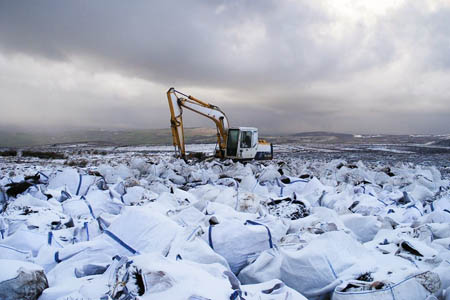One of the UK’s biggest ever conservation airlifts aims to turn Pennine uplands from black to green.
Helicopters will fly 5,500 bags of heather cuttings on to Bleaklow and South Pennines moorlands in a bid to re-establish vegetation on eroded peat areas.
The cuttings, known as heather brash, will then be planted by hand after the airlift from Glossop Low.
Workers will work on more than 809ha (2,000 acres) of Peak District and South Pennines moorland in the EU-funded project. The brash is cut from local moors in the winter when the seeds are ripe and spread on to bare, eroding peat, damaged by more than 150 years, centuries of airborne industrial pollution and wildfires.
The MoorLIFE project, run by the Moors for the Future Partnership, is seeking to regenerate the peat-producing blanket-bog vegetation. The brash reduces further erosion of the peat and at the same time gives the seeds a microclimate to grow-in and protect them from the harsh climate of the Pennine uplands.
Chris Dean, Moors for the Future Partnership programme manager, said: “As many gardeners across the country are selecting their seeds for this year, we too are doing the same but on a much larger scale.
“Time is also a factor. It can take up to three years just for the native species to establish, and over that period we have to carry out a number of phases of work, such as lime, seed and fertiliser, to support the growth of the new vegetation.
“The work programme is huge but the rewards for us all are great.”
MoorLIFE is a £5.5m project protecting active blanket bog by conserving bare and eroding peat in the South Pennines special area of conservation and special protection area. More than a million heather seeds will be spread during the operation.

Simon
18 January 2012It is great to see my local moors being helped out like this. Sadly they are cutting up other local moorland, like Scout Moor and covering it in wind turbines.